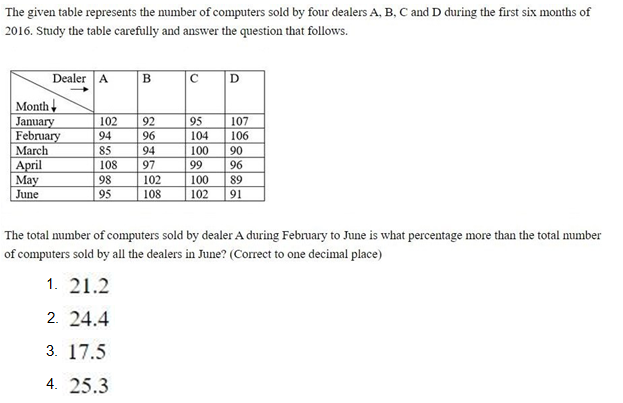Question
Statements : B ≤ I; E = D; H > F; C ≤ H; I = D;
A ≤ B; H < E Conclusions: (i) I > F (ii) B ≤ H (iii) A ≤ E (iv) E > F In the following question assuming the given statements to be true, find which of the conclusion among given conclusions is/are definitely true and then give your answers accordingly.Solution
Given statements: B ≤ I; E = D; H > F; C ≤ H; I = D; A ≤ B; H < E On combining: A ≤ B ≤ I =D = E > H ≥ C ; H > F Conclusions: (i) I > F , True since I= D = E > H > F (ii) B ≤ H , False since either B ≤ H or B > H (iii) A ≤ E , True since A ≤ B ≤ E (iv) E > F , True since E > H > F Hence, option 2 is the answer.
The number of students passed in college A is what percent (approximately) the number of student passed in college C? (During all the given year)
Find the ratio between the number of children visiting Buxa Tiger Reserve and Betla National Park together.
What is the average number of women visiting all the Parks together?
The total number of children visiting Kanha National Park is approximately what percent of number of children visiting Indravati National Park?
What was the ratio of the total number of students passed and failed in college C (during all the given years?

If the number of cars produced by Company P increased by 20% in 2023 compared to 2022, how many cars would be produced by Company P in 2023?
In 2021, what is the difference between the number of cars exported by Company P and Company R ?
What is the difference between the total number of orders who were not delivered by Jabong and Myntra together and that of who were not delivered by Fl...
What is the approximate average number of students failed in college C in during all the given year?
Relevant for Exams:


